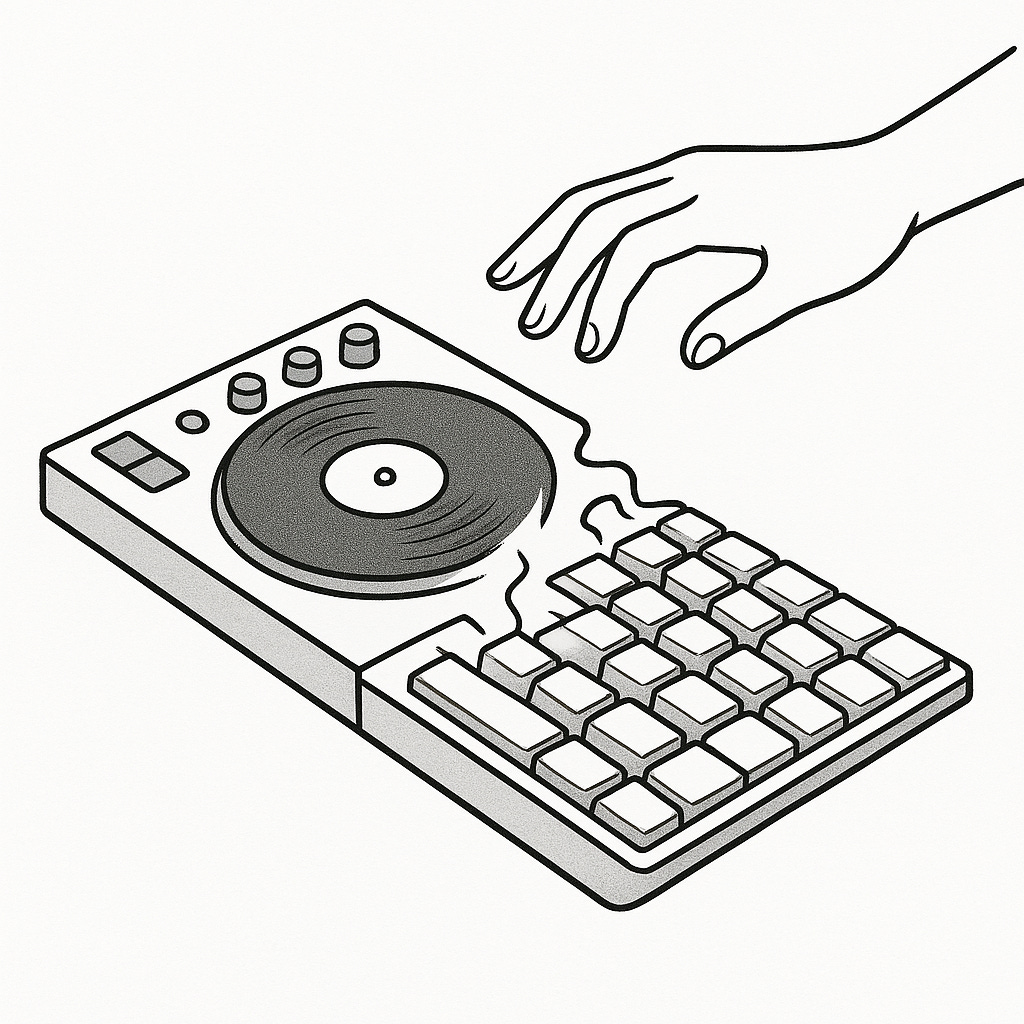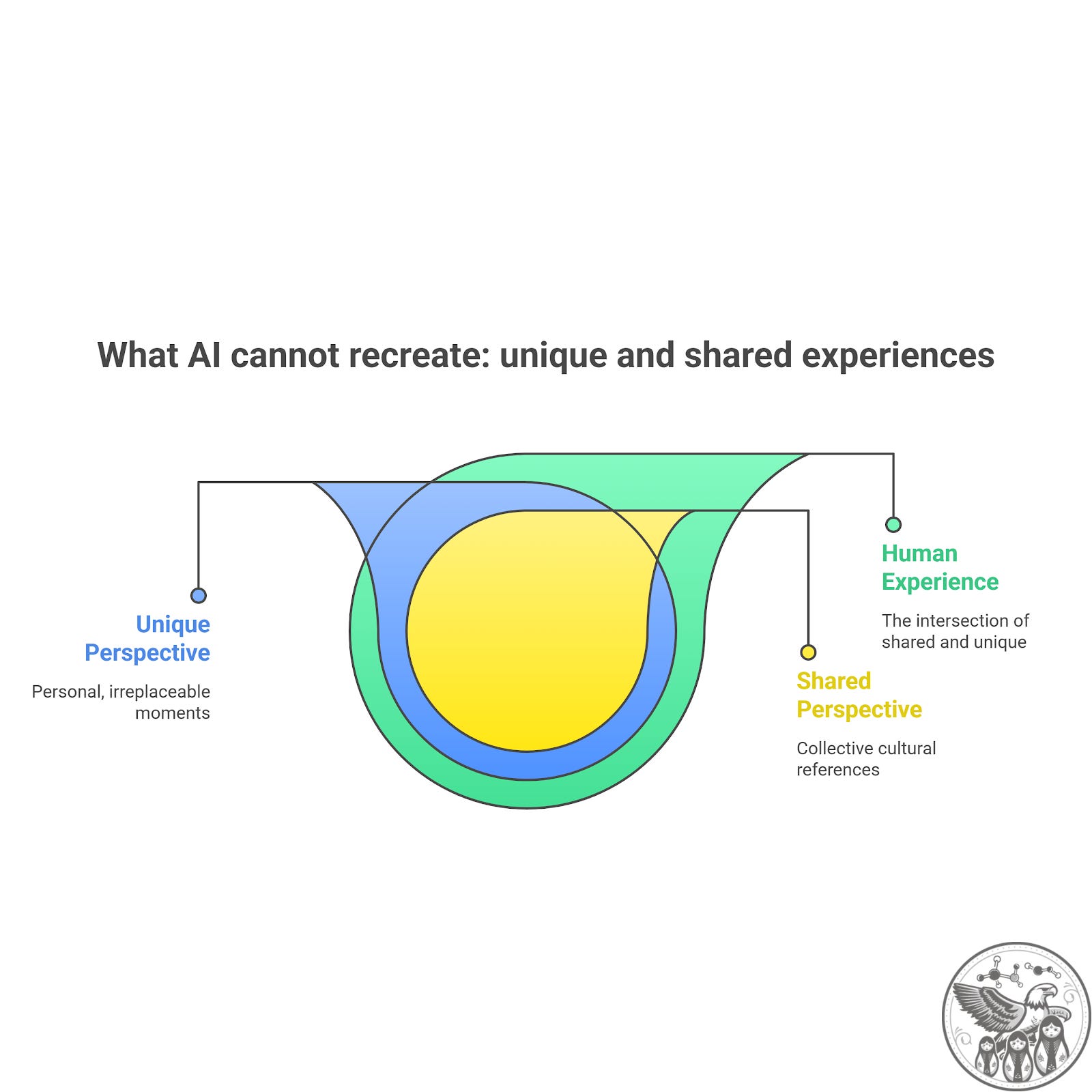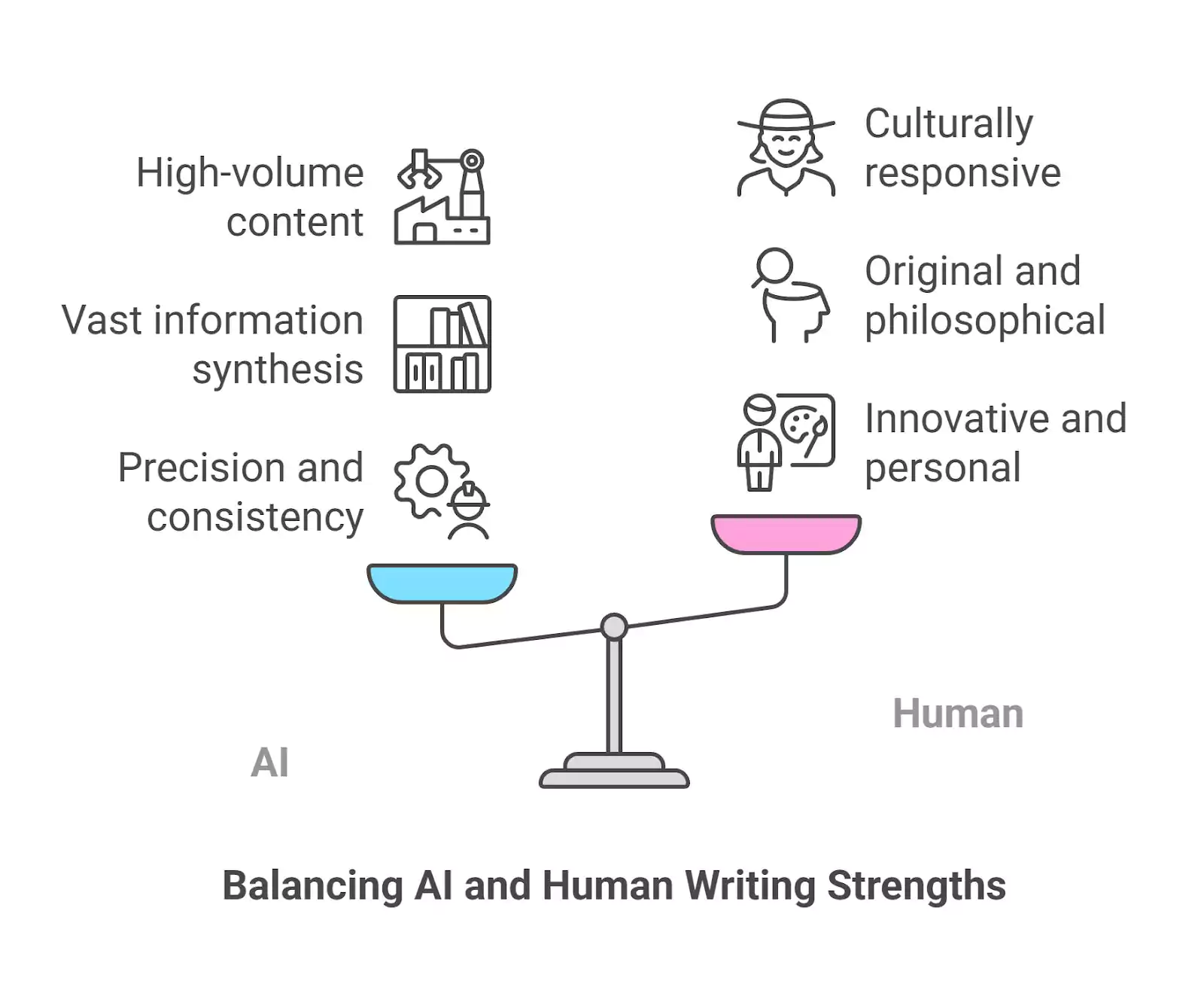Boost your skills with Growth Memo’s weekly expert insights. Subscribe for free!
There is something ironic about trying to make AI content more human. But there’s also something exciting about it because our work as writers and content creators changes fundamentally.
This shift reminds me of my time as a DJ – many moons ago.
I came up in the era when DJs would haul eight to 10 crates of vinyl records to every gig. During sets, I’d frantically dig through these crates, searching for the perfect next track.
Like a writer drawing from their mental library of phrases and ideas, I had to remember where specific records were and develop my own tagging system to find them faster.
Then, Serato1 changed everything.
This new technology lets you use two special vinyl records to play your entire digital music collection. No more hauling crates – any song was instantly accessible.
The game changed completely.
While some advantages disappeared (the exclusivity of having rare records), new creative possibilities emerged (like seamless remixing and creating custom edits).
 Image Credit: Lyna ™
Image Credit: Lyna ™The same transformation is happening to writing today: LLMs are our Serato.
Instead of laboriously crafting every sentence from scratch or drawing only from our mental archives, we can instantly access diverse expressions and ideas.
Like digital DJing tools, AI writing assistants give us a vast creative palette to work with.
And writers should embrace this shift! There’s no special honor in doing things the hard way.
However, just as a Serato DJ still needs musical knowledge and performance skills, raw AI output still needs human refinement.
Without careful editing, AI-generated content feels sterile and impersonal, making it less likely to resonate with readers or perform well on social platforms.
The key is treating AI-written material as a starting point – raw tracks to be mixed, if you will – and then thoughtfully enhancing it to create something truly compelling and human.
What Only Humans Can Provide
At its core, this piece about editing AI content is really about one question: “What is the unique value humans can still add to content?”
 Image Credit: Kevin Indig
Image Credit: Kevin IndigAfter countless nights wrestling with this question both intellectually and emotionally (hello, 3 a.m. anxiety!), I think I’ve finally cracked the code.
Based on my experience and from hours of “mixing” with AI, I’ve identified seven uniquely human writing capabilities that no AI can genuinely replicate:
- Patterns: Detecting subtle signals in wording, rhythm, and analogies that resonate with shared human experience.
- Topics: Intuitive understanding of what readers will find genuinely interesting or relevant.
- Experience: Personal stories and perspectives, especially from individuals with established reputations.
- Judgment: Applying nuanced moral reasoning beyond programmed guidelines.
- Taste: Making decisions about what works stylistically.
- Richness: Describing tastes, smells, textures, and sensations from lived experience.
- Secrets: Incorporating insights or data not available in AI training sets.
While humans sometimes overestimate true novelty (most progress is incremental), we remain the essential curators of AI output.
Maybe what matters most isn’t whether AI created something but whether humans recognize its value.
 Image Credit: Kevin Indig
Image Credit: Kevin IndigTo contrast the strengths of AI vs. humans, I want to break it down across four categories:
- Technical execution.
- Knowledge & information.
- Production & adaptation.
- Data & emotional intelligence.
1. Technical Execution
AI:
- Processing and error prevention (grammar, spelling, consistency).
- Maintaining strict formatting across long documents.
- Following detailed content guidelines with precision.
- Producing grammatically accurate content at scale.
Humans:
- Breaking established rules in meaningful, innovative ways.
- Creating new styles, formats, and genre-bending approaches.
- Developing distinctive personal writing styles.
- Writing with an authentic voice from lived experience.
2. Knowledge & Information
AI:
- Synthesizing information from vast knowledge bases.
- Generating factual content when based on data.
- Creating comprehensive explanations of complex topics.
- Cross-referencing information from multiple domains.
Humans:
- Contributing original research and firsthand observations.
- Developing genuinely novel philosophical insights.
- Creating work driven by authentic moral conviction.
- Writing from a deep cultural understanding of specific communities.
3. Production & Adaptation
AI:
- Generating high volumes of content quickly.
- Creating variations on existing themes and formats.
- Translating between languages with high accuracy.
- Restructuring content for different audiences and platforms.
Humans:
- Inventing entirely new literary forms and approaches.
- Crafting narratives that respond to the cultural moment.
- Creating humor that relies on nuanced cultural context.
- Developing satire that addresses contemporary issues.
4. Data & Emotional Intelligence
AI:
- Converting structured data into readable narratives.
- Summarizing lengthy content while preserving key information.
- Creating consistent documentation from technical specifications.
- Adapting content across multiple formats and channels.
Humans:
- Creating characters with complex, contradictory motivations.
- Writing dialogue that captures psychological nuance.
- Conveying subtle emotional states through deliberate word choice.
- Crafting stories that evoke powerful emotional responses.
Humans should let AI handle the baseline 80% – the beat-matching and tempo control, if you will.
And we should focus our creative energy on that critical 20% where we mix in the samples that nobody else has:our unique perspectives, surprising stories, moral nuance, cultural references, and truly novel ideas.
The AI Patterns You Want To Iron Out
Now that we understand what makes human content valuable, we need to recognize what makes AI content feel off-putting.
Just as an amateur DJ might technically match beats but still create an awkward, lifeless set, AI writing has specific patterns that signal “something’s not quite right here.”
Remember how even digital DJs still need to read the room?
Similarly, while modern language models can technically string words together beautifully, they still miss crucial human signals.
Through deep research and client work, I’ve identified 11 telltale signs that scream “an AI made this” – patterns that instantly disconnect readers:
- Sterile language: Overly formal phrasing that no human would actually use.
- Structural monotony: Predictable sentence patterns that create a hypnotic rhythm.
- Awkward transitions: Abrupt jumps between ideas without natural connective tissue.
- Robotic tone: An impersonal voice that keeps readers at arm’s length.
- Factual shakiness: Assertions that sound plausible but don’t hold up to scrutiny.
- Personality vacuum: Writing devoid of quirks, humor, or authentic perspective.
- Generic coverage: Surface-level treatment of predictable topics.
- Sourceless claims: Data statements without proper attribution.
- Shallow insights: Ideas that never push beyond the obvious.
- Brand misalignment: Content that doesn’t match your established voice.
- Weak bookends: Forgettable openings and conclusions that fail to engage.
The markers really stand out.
In the paper “Linguistic Markers of Inherently False AI Communication and Intentionally False Human Communication,”2researchers were able to detect 80% of AI content accurately by looking for:
- More emotional/affective language.
- More analytic writing style.
- More descriptive (higher use of adjectives).
- Less readable (more complex sentence structures).
Ironically, many human writers display these same weaknesses.
The difference? Humans can learn to overcome them.
Mixing The Perfect Track
The DJ analogy really comes full circle here.
Just as the best DJs don’t simply play songs in sequence but create something new through their mixing, the most effective content creators don’t just edit AI output – they transform it.
In today’s landscape, the most valuable content comes from creators who:
- Understand where AI tools excel (the technical baseline).
- Recognize where human input is essential (those seven unique capabilities).
- Can identify and eliminate those telltale AI patterns.
- Know how to blend the two seamlessly into something greater than the sum of its parts.
We’re not just editing AI content – we’re remixing it with our uniquely human perspective, creating something that no algorithm could generate alone.
Because ultimately, the most compelling content doesn’t come from humans fighting against AI or from AI attempting to replace humans. It comes from the thoughtful collaboration between both.
Next week, I’ll break down my exact workflow for editing AI content – the practical techniques I use daily to transform sterile AI output into content that genuinely resonates, connects, and performs.
You’ll learn how to efficiently leverage these tools while ensuring your content maintains that irreplaceable human touch.
1 Serato
Featured Image: Paulo Bobita/Search Engine Journal





![[SEO, PPC & Attribution] Unlocking The Power Of Offline Marketing In A Digital World](https://www.searchenginejournal.com/wp-content/uploads/2025/03/sidebar1x-534.png)